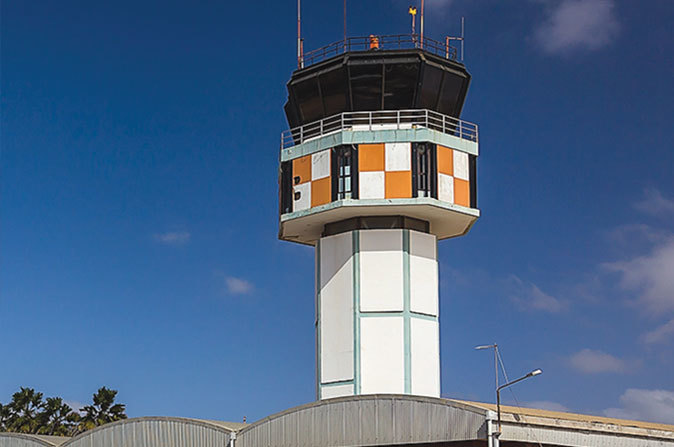Transport / Cape Verde
The sky is the limit
Aviation expansion is an important part of Cape Verde’s modern history. The challenge today is to accommodate the rise of mass tourism

Sal airport’s state-of-the-art air traffic management system can determine the position of planes without using radars.
Just like the rest of the country, Cape Verde’s airports have come a long way. The first airport was inaugurated during the Second World War, when the country was still a Portuguese colony. Built with Italian funds on the Island of Sal, the small facility initially served as a refuelling station for flights between Rome and South America. From small beginnings, the Cape Verdean aviation sector has grown and adapted to changing circumstances. The advent in 1960 of the DC-8-30, a series of aircraft capable of non-stop Atlantic crossings, made the refuelling scale in Cape Verde suddenly surperfluous. It was not until the late 80s, with the rise of global tourism, that Cape Verde finally became a destination ‘per se’, pushing the Government to invest and expand the infrastructures.
Because of the country’s insularity, here more than anywhere else aviation is both a necessity and a development opportunity. Along with domestic airports on the islands of Maio, Fogo and São Nicolau, Cape Verde now boasts four international airports, on Sal, Santiago, São Vicente and Boa Vista. This last one was practically deserted until the opening, in 2007, of the international terminal. Since then, it became the favourite destination for foreigners and the hotel resorts installed here have created hundreds of jobs.
Existing infrastructures are evolving to meet the new challenges. Proof of the tourism success, Lonely Planet, a tourism guides publisher, has ranked Cape Verde amongst the world’s best destinations for 2014. Easing passenger congestion is what foreign tour operators, the aiports’ biggest clients, claim right now for.
Cape Verde’s airport management company, Empresa Nacional de Aeroportos e Segurança Aérea (ASA), has assigned over $55 million to upgrading existing infrastructures in the period 2009–2014. The inauguration of a new terminal in the small island of São Nicolau in 2013 marked the completion of the country’s airport network. Nevertheless further investment is yet to come, especially on the upgrade of the passenger terminals, in order to provide an enhanced experience to travellers.
In spite of the world financial crisis, in the first half of 2013 international flights in and out of Cape Verde increased 8.8% over the same period last year. The possibility to fly direct to any of the archipelago’s four international airports has undoubtedly contributed to this success. However, deficiencies in domestic flights connections, handled exclusively by loss-making national airline Transportes Aéreos de Cabo Verde, are still to be solved.
In addition to passenger services, ASA also continues to invest in state-of-the-art air traffic control systems and pilot training, to guarantee flight safety. Along with the International Air Transport Association, the company has also implemented the iFlex program, which shortens air routes to reduce fuel burn and carbon emissions. With these measures, Cape Verde aims to leverage even further the enormous potential of the aviation sector.
